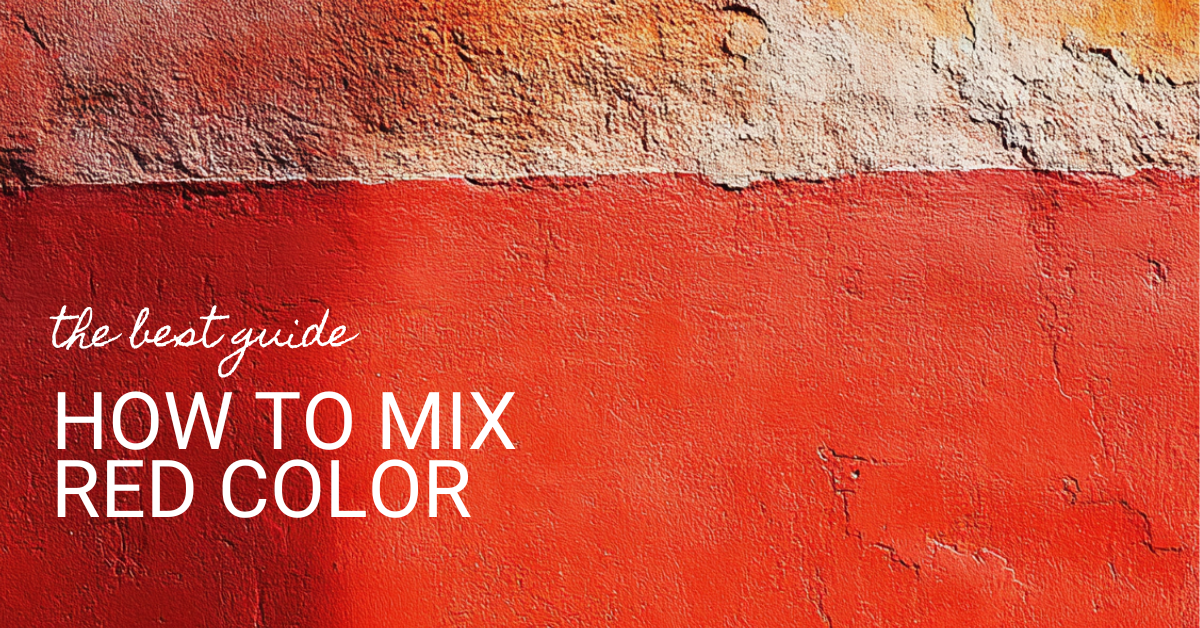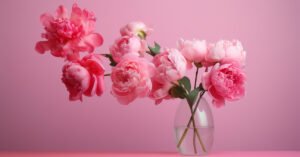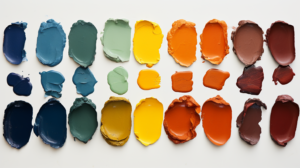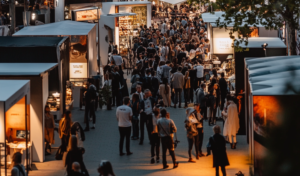You know what colors make green or orange. But what colors make red? Or, first of all.. It is at all possible to make red by mixing other paints together?
Let’s be totally honest here: ideally, if you’re seeking a pure red hue and have access to a paint store, purchasing red paint is your best bet. It’s a time-saver and guarantees the vibrant, true red color you’re looking for.
However, there are situations where buying new paint isn’t feasible. Perhaps you have an array of other paint colors except red. In such cases, the question arises: Can you mix other paints to create red? While achieving a primary red through mixing is a complex task, there are ways to approximate red shades using available colors.
I will show you below 6 different ways how to mix red: one about what two colors make red, other about how to mix with red to get specific red tones for your artwork.
So, can you make red from other paints? What colors make red?
The answer is: red is a primary color in traditional color theory, which means it cannot be created by mixing other primary colors. However, there are ways to create shades of red or red-like colors by mixing different paints. The secret here is:
- Mixing with magenta and yellow: In subtractive color mixing, mixing magenta with yellow can make a shade of red. THIS IS THE BEST WAY TO GET RED without having red paint in hand.
However sometimes you need to manipulate red paint to suit your specific needs, so for this I give you some extra tips for:
- Creating variations of red from red paint: While you cannot create a pure primary red from other colors, you can create various shades, tints, and tones of red by mixing red paint with other colors. For example, adding blue to red paint can create purple-red shades, and adding white can create pink.
- Muting red color by mixing red with its complementary color (green)
- Changing the value of red using black and white
In traditional painting and physical mediums, creating a pure primary red from other colors is not feasible, but various red hues and shades can be achieved through mixing.
How to get red from mixing magneta and yellow (NB! YOUR BEST CHOICE)
Step-by-step guide to mixing magenta and yellow to create red-like color
This is for you when you don’t have red paint, but you do have magneta and yellow paint. This is the best way to creating red color without having red paint itself.
- Prepare your paints: Arrange your magenta and yellow paints on a palette. Ensure you have a palette knife or a brush for mixing.
- Start with magenta: Scoop a small amount of magenta paint onto your mixing area.
- Add yellow gradually: Introduce a tiny bit of yellow paint to the magenta. The ratio should start with significantly more magenta than yellow.
- Mix thoroughly: Blend the two colors together until you achieve a uniform color. Observe the shade of red being formed.
- Adjust as needed: If the color is too orange, add more magenta. If it’s too purple, add a bit more yellow. Mix after each adjustment.
- Finalize your shade: Once you’re satisfied with the shade of red, your mix is ready to use.
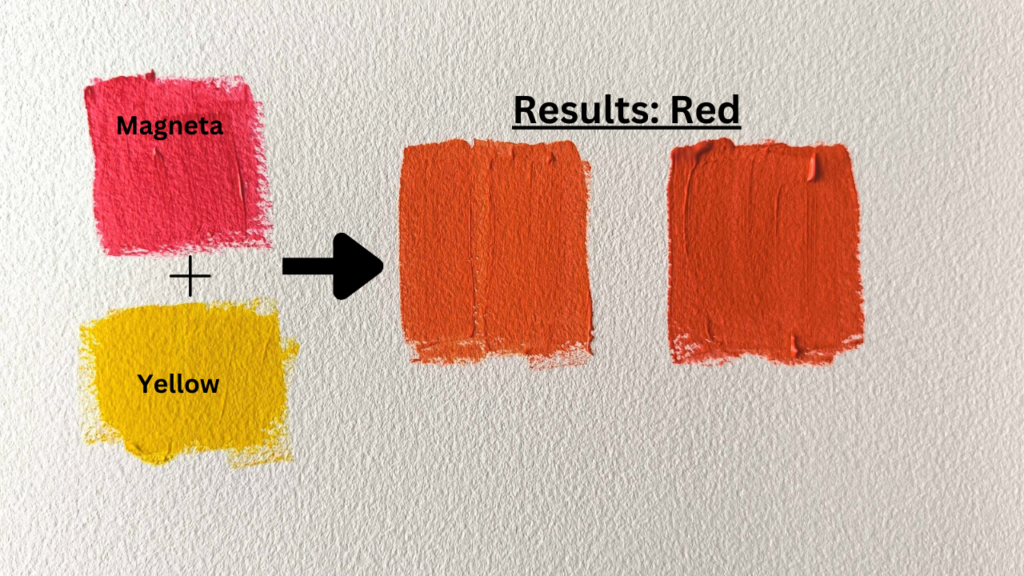
Pros and cons of basic color mixing
- Pros:
- Simple and straightforward.
- Allows for customization of the red shade.
- Utilizes basic color theory principles.
- Cons:
- May not produce a pure primary red.
- Requires practice to perfect the color balance.
- Dependent on the quality and pigmentation of the paints used.
If you happen to have a bright neon color (Reflex Rose, for example), you can try adding this to the mix, to get even more vibrant red result:

Next to real red roses, how do these reds compare in reality? I think they look really good. Especially for painting the most vibrant red parts of a rose. But how to get these dark red hues, deep reds, for other parts of the rose?
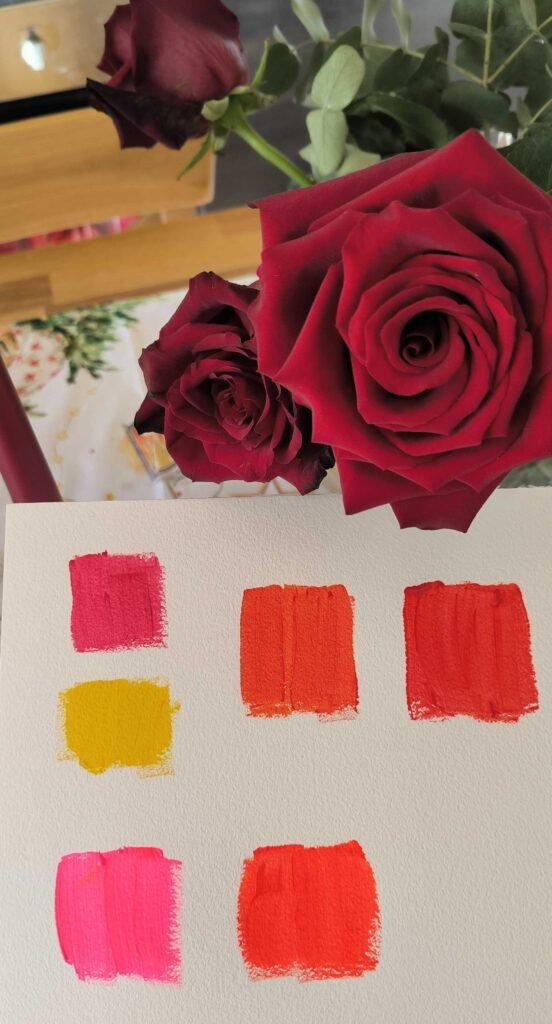

How to make red deeper in color
Step-by-step guide to combining pigments
This works when you have red paint, but you need a deeper, darker version of that red.
- Prepare your paints: Start with red as your base color on your palette.
- Choose your darkening color: Pick a color to mix with red to deepen it, such as blue, brown, or black.
- Add the darkening color sparingly: Introduce a very small amount of the darkening color to the red.
- Mix thoroughly: Blend the colors together until you achieve a uniform, deeper shade of red.
- Adjust the shade: Add more red to lighten, or more of the darkening color to deepen the shade.
Pros and cons of subtractive mixing
- Pros:
- Enables the creation of rich, deep reds.
- Ideal for creating shadows and depth in artwork.
- Cons:
- Can quickly become too dark if not careful.
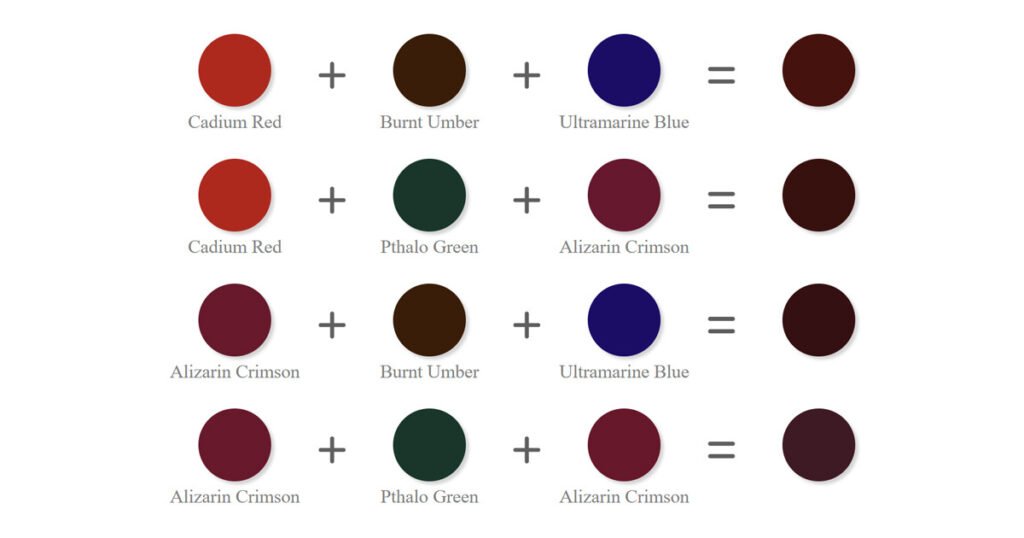
How to mute red
Step-by-step guide for muting red by adding its complementary (opposite) color
Use this when you have red and green paint, but your red looks too vibrant, and you’d like to mute the color down a bit (get duller version of red).
- Prepare your red and green paints: Place red paint on your palette and have green paint ready for mixing.
- Start with red: Begin with a base of red paint.
- Introduce green gradually: Add a tiny amount of green paint to the red. Remember, green is red’s complementary color and will mute its intensity.
- Mix carefully: Blend the two colors until the red becomes muted and toned down. The more green you add, the more muted the red will become.
- Adjust to desired muted shade: Continue adding green in small increments until you achieve the desired muted red.
Pros and cons of using complementary colors
- Pros:
- Allows for subtle adjustments to the red’s intensity.
- Can create a wide range of muted reds.
- Cons:
- Over-mixing can dull the color too much.
- Requires a delicate balance to avoid completely neutralizing the red.
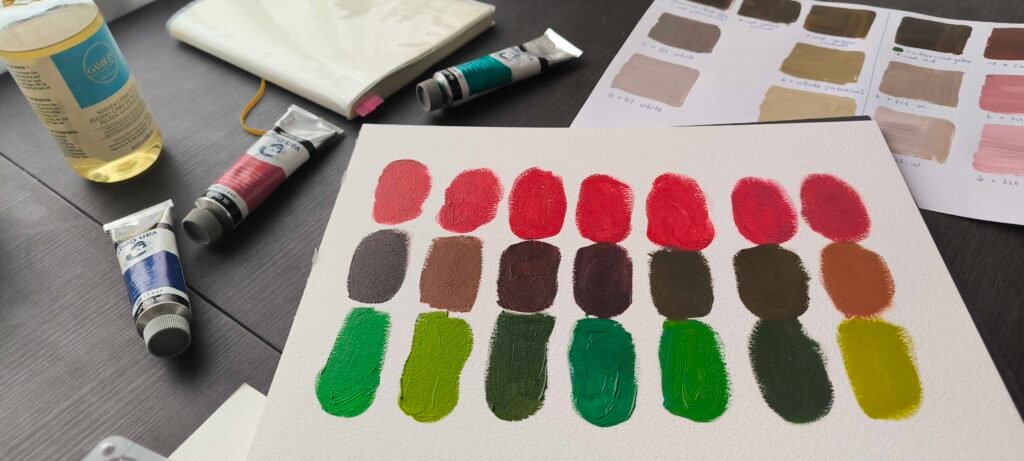
Here, take a look of my separate post about mixing reds and greens together.
How to make red darker or lighter
Use this when you have red, black and/or white paint, and you would want to adjust the value of your red for more or less contrast in your artwork.
When adjusting the value of red in your artwork without changing its hue, the key lies in mixing pure red with black or white. For adjusting value, also other colors work – for example ultramarine for increasing and light yellow for diminishing contrast.
- Darkening red with black: Introducing black to red deepens the shade, lending the color more depth and intensity. However, too much black can overpower the red, making it hard to discern the original hue, and may lead to a muddy or overly dark color.
- Lightening red with white or yellow: Adding white to red lightens its tint, creating softer and paler versions of red. Adding light yellow creates a bit warmer hue of light red. Be cautious though; an excess of white can transform red into pink, significantly changing its character. Here’s an example how to mix red to lighten it:

How to mix colors to make red warmer
Sometimes you have red, but you just need to make an existing red warmer in hue. What colors make shades of red that look warm? For that case, mix red with orange or yellow color, and see how this changes the color:

How to mix colors to make red cooler
Likewise, sometimes you need to know, what colors make shades of red that look cool. For this result, mix red with blue or purple, and you get more purplish red for your artwork:

Mixing purple and yellow? Mixing violet and yellow? Do these make red?
If you don’t have magneta, but you still need red.. On a color wheel: violet is closer to blue and purple is closer to red. Both of these contain magneta (needed for mixing with yellow to get red), only that violet contains more red and purple contains more blue than magneta.
Here’s what you get mixing Violet and Yellow:

It looks kind of brownish red. Compared to real roses in my vase:
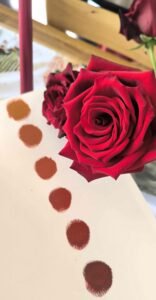
Conclusion
Pure red, a primary color, cannot be created by mixing other colors. However, the art of color mixing allows for the creation of an array of red shades—dark, light, cool, warm, and muted tones. This article serves as your guide to exploring these variations. Through these color mixing guides and examples, you now know how to manipulate hues to craft various shades of red, providing you with the tools to enrich your palette with this vibrant and versatile color. Hope it helped you. Happy painting 🙂


